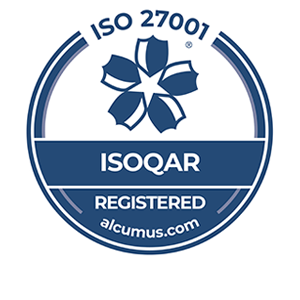Market research is an interesting field, with many different research methods from the more traditional surveys, focus groups, and dairy research, to the more innovative VR/AR immersive research, eye-tracking techniques, and multiple behavioural science-based methods.
But most of these terms are instantly recognisable – what isn’t talked about quite as much is implicit vs explicit testing. This article is dedicated to exploring just exactly what the difference between implicit and explicit research is, and what the future of these methodologies entails.
Implicit vs. Explicit - The Difference Defined
Explicit testing techniques are those direct methods such as traditional surveys and focus groups, those that allow consumers to take the time to deliberate on their answers before answering – providing more informed and rational insights. The incitement of system 2 thinking in participants is what defines this type of testing.
Implicit testing is the exact opposite. It involves methods that immerse participants in the desired scenario and relies on their in-the-moment, intuitive actions to create more accurate insights rather than their rationalised decisions. System 1 thinking is what defines implicit tests - the most popular implicit test is the Implicit Association Test, developed by Harvard University , which measures the attitudes and beliefs that people may be unwilling or unable to report.
It is important to note that, while these definitions will enable you to build the start of an understanding on implicit vs. explicit research methods, many implicit research authors mention a scale of ‘implicitness’ that is defined by how controlled the conditions of testing are, which means that there is currently no fully implicit testing method, but there are methods that incite a stronger system 1 rhetoric than others.
Evolving Research Methods - The Difference Explored
Building the definitions above, explicit testing techniques are what the market research industry was built on, and are still the foundations on which insights today are built. Explicit research methods are those that reveal “direct, deliberate, controlled, intentional self-assessments”; the research methods we employ on a daily basis have brought us much closer to understanding the truth behind the decision-making process, and provide us with valuable tools to start trying to inform the decision-making process in numerous different ways.
But. as Aaron Reid so simply states, there are limits to those research methods, no matter how much we innovate them with mobile, smart, and automation technologies: limits to motivation, honest answers, opportunity in answer options, ability to articulate our responses without a lot of effort involved on all ends, and awareness. In his article on implicit testing, Reid drew up a table of limitations based on a study from Nosek et al. explaining these in a more comprehensive manner, which can be found here.
Our familiarity and reliance on these techniques has not blinded us to the fact that these rationalised insights don’t quite cover the whole spectrum of human decision-making. They lack emotional attachment and influence; they are based on what consumers would like themselves to be, rather than reveal their true character, thoughts and opinions.
So it comes as no surprise that our market research methods have evolved to encompass and be influenced by outside research sources, mostly from behavioural science disciplines such as psychology, cultural anthropology, and sociology; and that the more innovative, new techniques that are still very niche in the industry, are focussed on gathering the actions of a consumer – immersing them in the right environment so as to get “true” reaction-based responses.
At the moment, this can be achieved through popular methods such as: social media intelligence, which allows researchers to observe consumers as they interact with each other in a non-research environment; facial and eye tracking technology when customers walk through a store; recording equipment as a participant faces the a scenario through virtual or augmented reality; or through wearable and smart technology, which has the ability to record data of participants moving through their everyday lives, tracking where they go, what they do, and what they feel – but the technology required to facilitate this type of research isn’t as widely available to both researchers and participants as survey or focus group software, so immersive environments can be a little harder to come by and no true implicit test has yet to be completed.
However, these are methods that can appropriately be classed as implicit testing techniques, and even on a smaller scale provide a window into a participant’s emotional, intuitive decision-making process directly connected to action-led decisions, which is very important if we’re to close the perception gap consumers have between their rational intentions and impulsive actions.
Consumer Intention vs. Action – Looking to the Future of Implicit Testing
Let’s take a moment to think on this issue that we’re all familiar with as insight professionals: the gap between consumer intention and consumer action has plagued our industry for years, rendering well-researched and well-intentioned data completely off base. This gap is an issue that we can slowly start to close by learning the difference between implicit and explicit testing - but there is still one big question we need answered about these two forms of testing: how do we fit implicit testing into traditional research structures?
Because when it comes to implicit and explicit testing, it’s not one or the other. Fitting both modes of testing in with each other will reveal more to us about our participants than taking them both separately. Just as the two systems of human behaviour are intertwined, and influence each other, so should the methods we chose to observe them. This is how we close the gap between intention and action, by understanding how they work together and inform our behaviours and character on a daily basis.


















